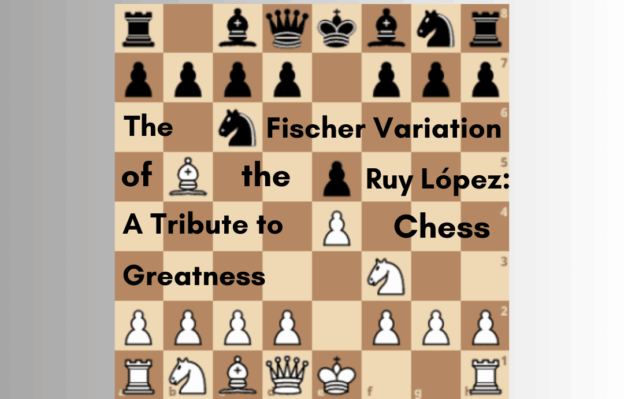In the world of chess openings, the Ruy López stands as one of the most celebrated and enduring choices for players seeking classical elegance and strategic depth. The Fischer Variation of the Ruy López, named after the legendary Bobby Fischer, adds a touch of brilliance and innovation to this venerable opening. This essay explores the history, principles, and enduring appeal of the Fischer Variation.
Historical Origins:
The Ruy López, named after the Spanish priest Ruy López de Segura in the 16th century, has been a cornerstone of chess openings for centuries. The Fischer Variation, on the other hand, gained prominence in the mid-20th century when Bobby Fischer, one of the greatest chess players in history, introduced it as a means to create imbalanced positions and sharpen the game.
Key Moves and Variations:
The Fischer Variation of the Ruy López typically arises after the moves 1.e4 e5 2.Nf3 Nc6 3.Bb5 a6 4.Ba4 Nf6 5.O-O Be7 6.Re1 b5 7.Bb3 d6 8.c3 O-O 9.h3 h6. While the classical Ruy López often involves the maneuver Bc8-d7-c8, Fischer’s approach with 9…h6 represents a more flexible and modern way to proceed.
Principles and Characteristics:
- Flexible Pawn Structure: Fischer’s 9…h6 introduces a subtle pawn move that adds flexibility to Black’s setup. It prepares for future piece development and provides a safe haven for the bishop on e6.
- King Safety: The Fischer Variation places a premium on king safety. By postponing immediate piece development, Black ensures that the king remains secure, often castling kingside later in the game.
- Imbalanced Positions: One of the defining features of the Fischer Variation is its capacity to create imbalanced positions. By delaying the early Bc8-d7-c8 maneuver, Black keeps the game more open and less predictable, making it a favorite choice for those who seek dynamic and fighting chess.
Modern Relevance:
The Fischer Variation of the Ruy López enjoys enduring relevance in contemporary chess. While some grandmasters may prefer more traditional approaches, this variation remains a potent choice for players who appreciate its adaptability and its ability to lead to imbalanced positions. Its enduring popularity reflects Bobby Fischer’s enduring legacy in the world of chess.
Famous Practitioners:
Bobby Fischer’s use of the Fischer Variation in his games has immortalized this opening choice. Fischer’s profound understanding of chess and his innovative approach continue to inspire players to this day. His legacy serves as a reminder that chess, at its highest level, is a canvas for creativity and strategic brilliance.
Conclusion:
The Fischer Variation of the Ruy López is a tribute to the genius of Bobby Fischer. It adds a modern twist to a classical opening, infusing it with flexibility and tactical potential. Beyond its theoretical richness, this variation is a testament to the enduring fascination of chess, where innovation and brilliance continue to shape the evolution of the game. In the Fischer Variation, players find a bridge between tradition and innovation, a reflection of the timeless appeal of chess.
